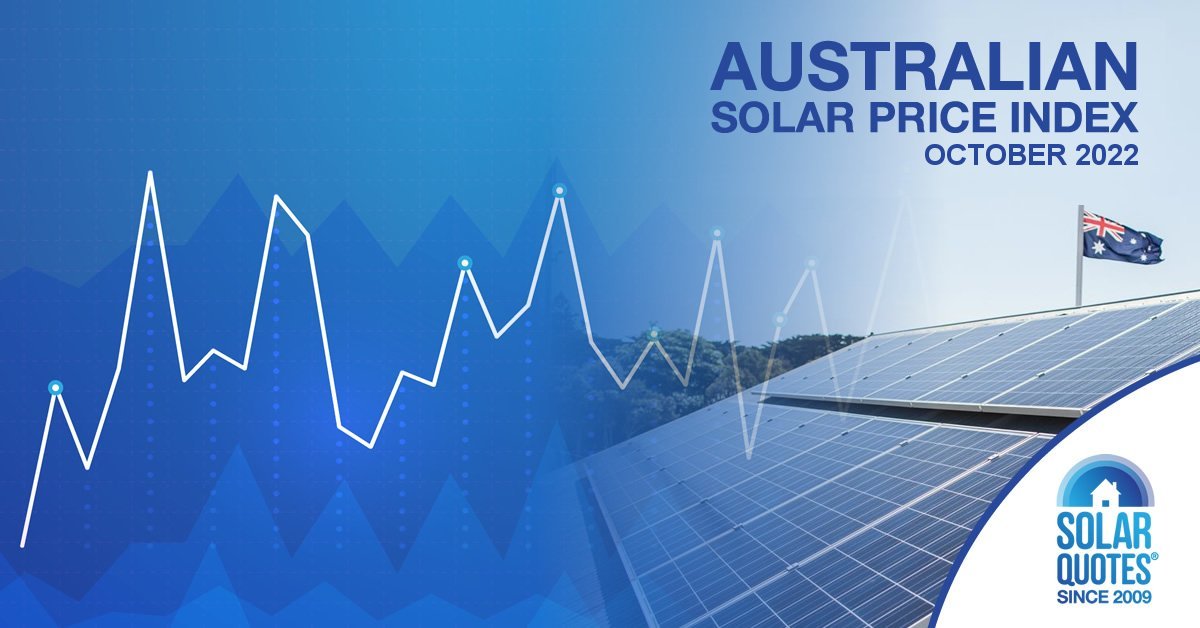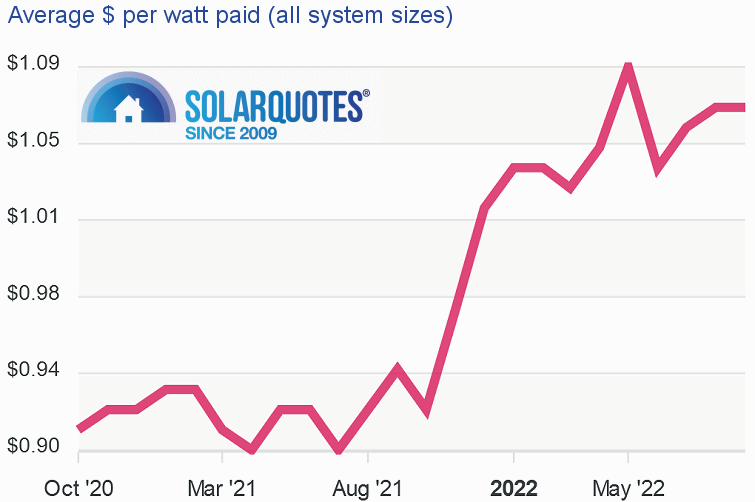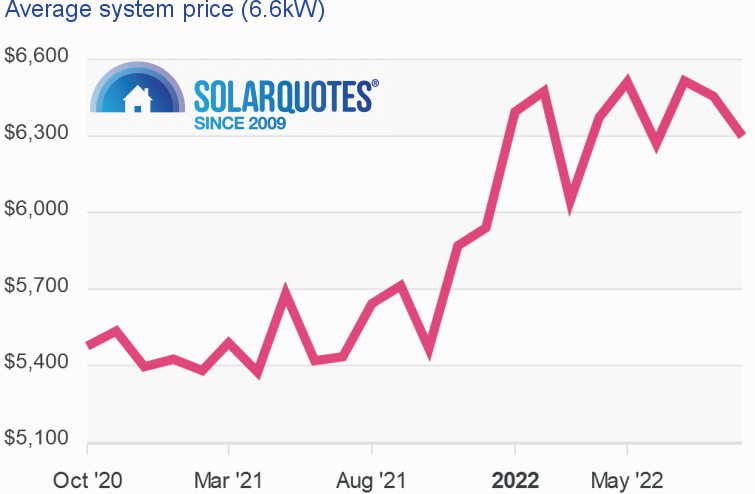
Just one Australian state dropped below a dollar a watt on average for fully installed solar systems during September 2022 – and it wasn’t WA.
According to SolarQuotes’ Australian Solar Price Index, the only state to see fully installed prices (after solar rebates and subsidies) below this threshold was South Australia; which dropped significantly from $1.13 per watt in August to 98c in September. Average installed prices in Western Australia, usually the cheapest, have been heading up for four consecutive months.
| State | Cost per watt (September 2021) |
Cost per watt (August 2022) |
Cost per watt (September 2022) |
| QLD | $0.88 | $1.02 | $1.03 |
| NSW | $1.01 | $1.13 | $1.13 |
| ACT | $1.31 | $1.52 | $1.33 |
| VIC | $0.87 | $1.03 | $1.00 |
| TAS | $1.12 | $1.27 | NA |
| SA | $0.93 | $1.13 | $0.98 |
| WA | $0.81 | $0.96 | $1.05 |
| NT | NA | NA | NA |
| AU | $0.94 | $1.07 | $1.07 |
The costs per watt in the table above for September 2022 are based on 324 solar installer review submissions received by SolarQuotes to October 27 where pricing of systems was included. These numbers may change as new reviews are received. Note the averages cover everything from crap to craftsperson solar, and from very cheap (as in cheap and nasty) to grossly overpriced (and sometimes also nasty) systems.
To see general pricing ranges for good quality systems, check out SQ’s solar panel costs page.
Cost Per Watt – National Averages
The following graph indicates average cost-per-watt across all system sizes nationally going back to October 2020. Pricing remains elevated compared to a year ago ($1.07 vs. 94c), and that situation has been in play for close to 12 months now.
6.6kW Solar System Prices – September 2022
For fully installed 6.6kW systems specifically – a popular capacity choice – average pricing for all quality types and after subsidies dropped from $6,456 in August to $6,299 in September.
Pricing on 6.6kW solar systems can vary greatly between the states. For example, in September the range was from an average $5,900 in Western Australia to $6,800 in New South Wales. If we had any useful data for NT and TAS, it would have likely shown significantly higher again.
Looking Ahead: Solar Rebate Reduction, Power Price Rises
Solar installers should be kept pretty busy in the final months of this year and beyond given the scheduled solar rebate reduction in January and news this week of even more significant electricity price rises for many Australians, which created another rush on quotes. Whether this increased demand will translate to higher system pricing remains to be seen.
For Australians who are able to get solar panels installed before the proverbial really hits the fan on power prices, there’s an added bonus to look forward to. Not only will these households and business reduce their dependence on expensive mains grid power; but as wholesale electricity costs go up, feed-in tariff rates *should* follow at some point in the states impacted.
But regardless of where electricity prices are heading, it will still remain the case that the most value from a solar power system will be realised through a focus on solar energy self-consumption.



 RSS - Posts
RSS - Posts



Interesting about feed-in tariffs “possibly”rising. This is the elephant in the room. We have just been informed by our retailer that the tariff will drop to 5cents/kWh after 15kWh of feed-in power. I have written to the minister responsible here in SA some time ago about the fact that companies can now obtain cheap solar and sell it at very high retail rates (40c/kWh). It is both immoral and legalised robbery. I have not heard back from the minister….
What was that about energy companies seeing record profits ?
In general, solar feed-in tariffs definitely should be going up. According to some information I am currently looking at – which may or may not be accurate – over the past year the average wholesale price for rooftop solar electricity fed into the grid, per kilowatt-hour, has been…
NSW: 10.8 cents
QLD: 10.5 cents
SA: 6.3 cents
TAS: 8.8 cents
VIC: 5.6 cents
As rooftop solar saves on long-distance transmission and other costs, the actual solar feed-in tariff should be higher than this.
While our FIT should at least be equivalent to the wholesale price applied to our retailer, the cost of distance and infrastructure does not really change whether we export solar or not, unless our export always reduces peak call on transmission,….as the transmission capacity must always be there.
But if we have batteries then network transmission capacity could be less and then we should get some benefit,…other than directly saving buying expensive power
Long distance transmission definitely has to be paid for, but only electricity that uses it should pay that component. Otherwise, prices become distorted — or more distorted. This makes energy from distributed solar more valuable, as it’s mostly consumed locally.
Well, here in SA, we have always been paying for transmission – it appears on our bill as “Access Fees” not an insignificant amount that brings millions into the sector.
What’s the result for WA?
I’m afraid WA isn’t part of the National Electricity Market (NEM) and doesn’t have its wholesale price figures published like other states. Basically, they are secret.
The problem with Solar energy has always been the Earth’s rotation. It’s hard to do PV overnight, and difficult to cover Breakfast and Supper.
The currently viable solution is batteries, but under current rules, it is difficult to claim that these are a viable investment. To change this, one could dream about subsidies, but better feed-in tarrifs _at peak times_ (usage/demand, not production) would probably be far more motivating.
They would also reduce the need for _base-line_ power stations, whether coal, gas or nuclear.
I still favour nuclear, but I’m happy to use the rector that is 83 million miles away.